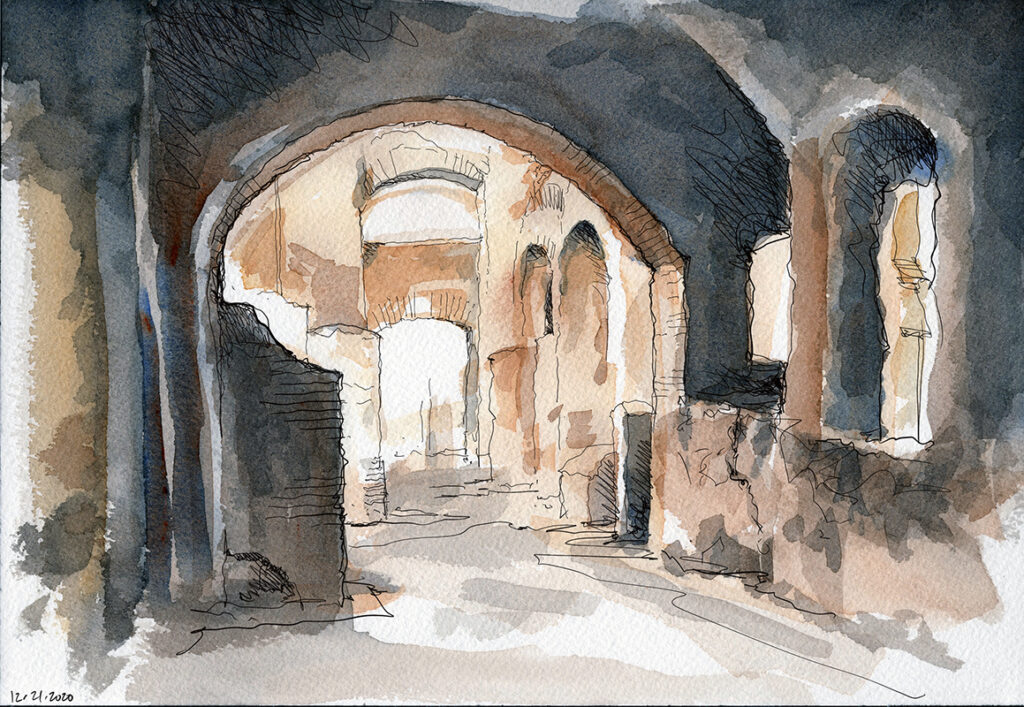
We can see the light at the end of the tunnel!!! As the winter solstice passes and the days slowly but surely get longer, we look forward to 2021. Happy Holidays to one and all…And Best Wishes in the New Year.


We can see the light at the end of the tunnel!!! As the winter solstice passes and the days slowly but surely get longer, we look forward to 2021. Happy Holidays to one and all…And Best Wishes in the New Year.
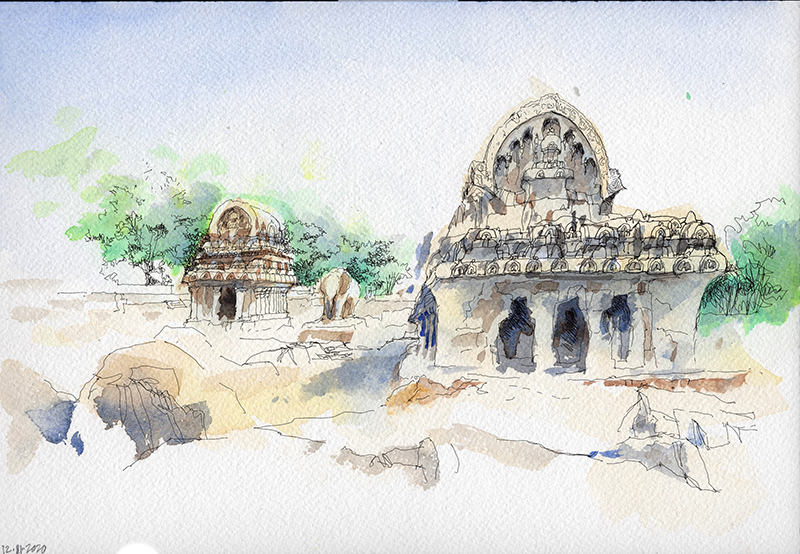
Another pandemic-induced hybrid sketch, this time of the Five Rathas site at Mahabalipuram, on the coast of the Bay of Bengal, in Tamil Nadu state, India. The complex, built in the 7th century during the reign of King Narasimhavarman I, comprises fine examples of Indian rock-cut architecture. Each ratha (chariot) is carved from a single granite monolith. The above view shows the Bhima Ratha on the right, the Nakula Sahadeva Ratha back and toward the left, with a full-size elephant sculpture in between.
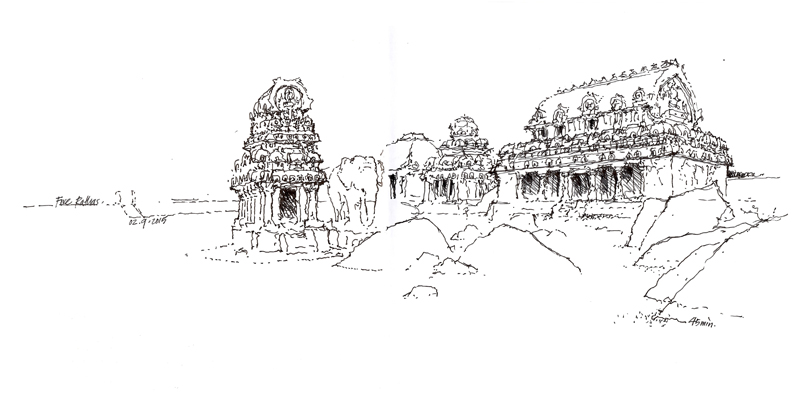
This is another view drawn on site during my visit to Chennai in 2015. The Five Rathas was declared a UNESCO World Heritage Site in 1984.

The combined effects of the ongoing pandemic and current cold, rainy weather have made it increasingly difficult to leave the home office to go out to draw. So it’s a good time to explore new ways of working. Just as with the portrait of Istanbul posted previously, this familiar view of the Pantheon in the historic center of Rome was created through a hybrid process involving a watercolor underpainting, scanned and imported onto my iPad, and using the Procreate app to draw over the watercolor image.
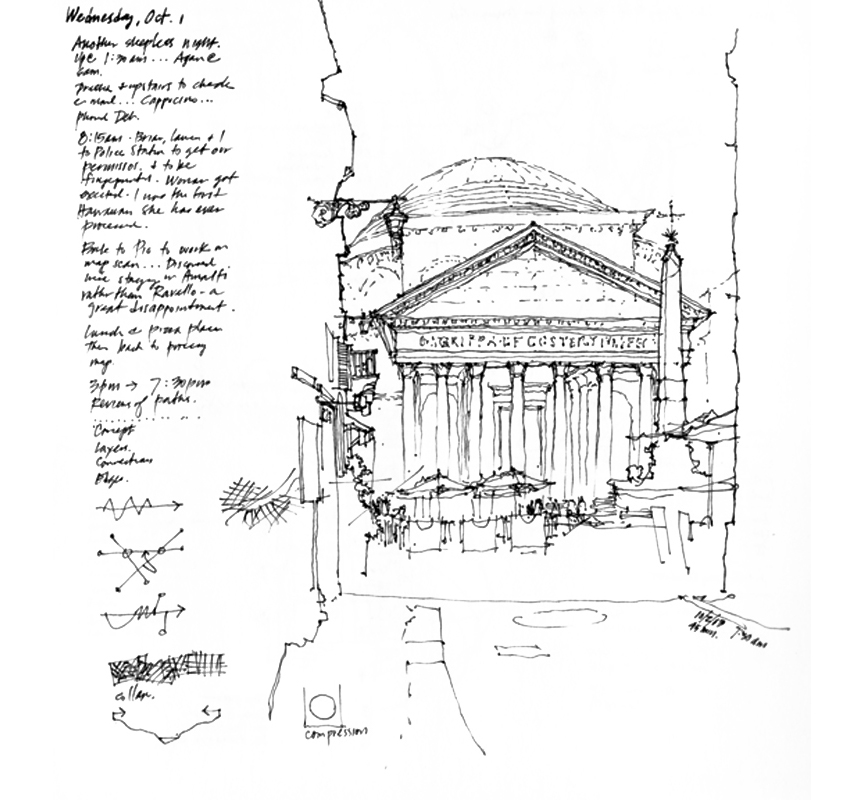
Keep in mind that using a photograph as a reference is very much different from drawing on location, from direct observation. A photograph captures a moment in time and reflects the processing that flattens out three-dimensional data onto a two-dimensional surface. A drawing done on location, such as the view above, takes longer to execute and involves our senses, especially that of active seeing.
But in both cases, like a conversation, we do not know precisely where the drawing or painting process will lead. Even though we may have an objective in mind when we begin to draw, the sketch itself takes on a life of its own as it evolves on paper and we have to be open to the possibilities the emerging image suggests.
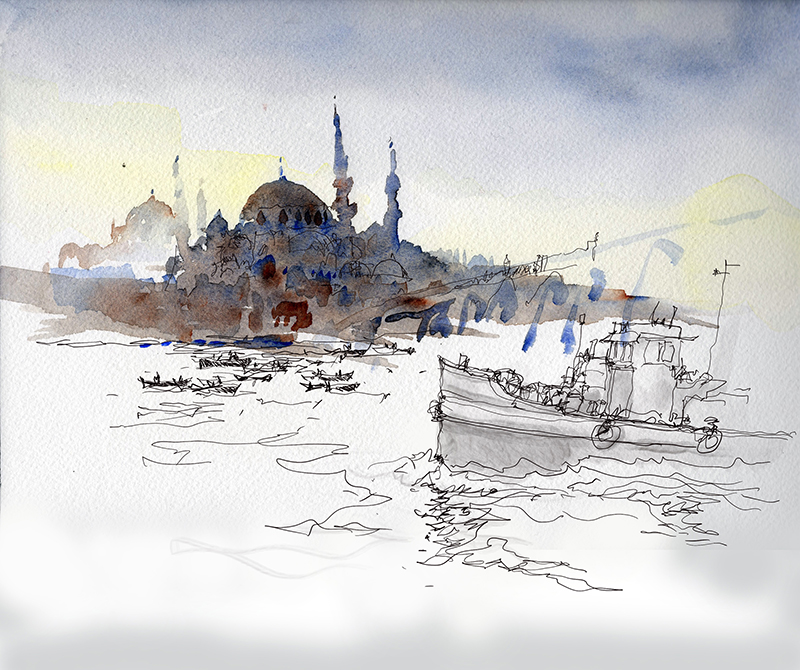
A view of Istanbul inspired by Ara Güler’s photographs that document the multilayered life of Istanbul from the 1940s to the 1980s, as well as my own memories of visits to that historic city that bridges east and west.
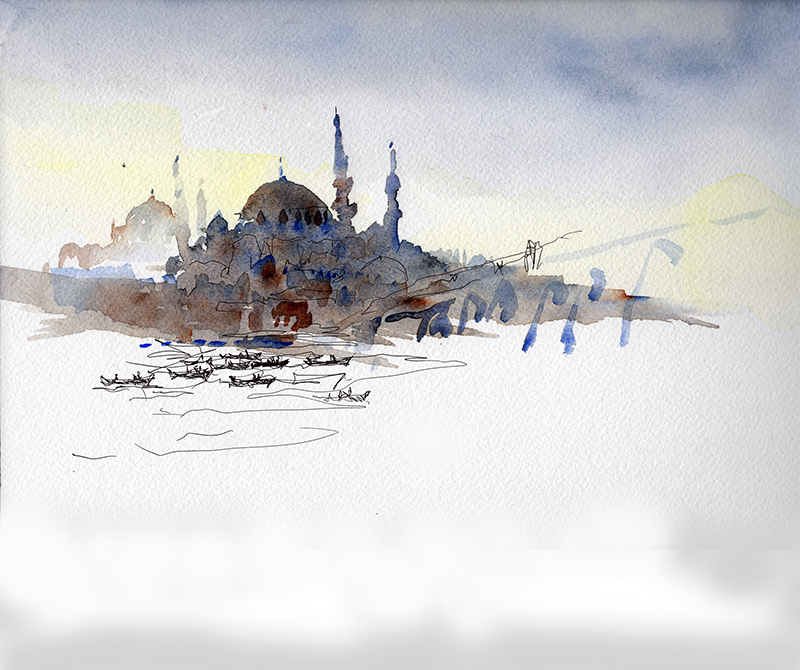
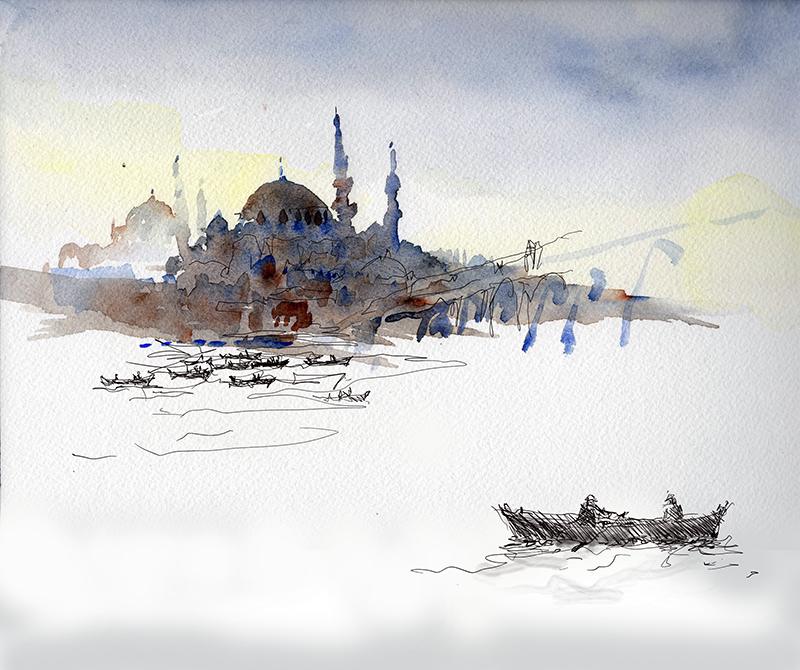
A brief word on process: First, a watercolor splash of Istanbul’s memorable skyline punctuated by her mosques and minarets. Then, a scan imported into Procreate on the iPad. Next, several attempts at foregrounding a hint of the steamers and smaller fishing boars that ply the Bosphorus.
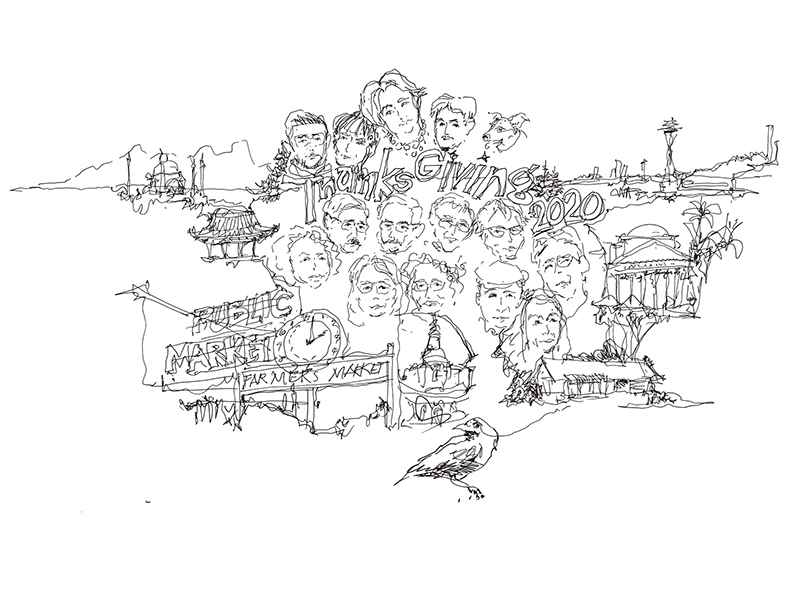
For partners and pets, family and friends, nature’s flora and fauna as well as the creative constructions that enrich our lives, and all who hold compassion and love in their hearts. And for all the memories.
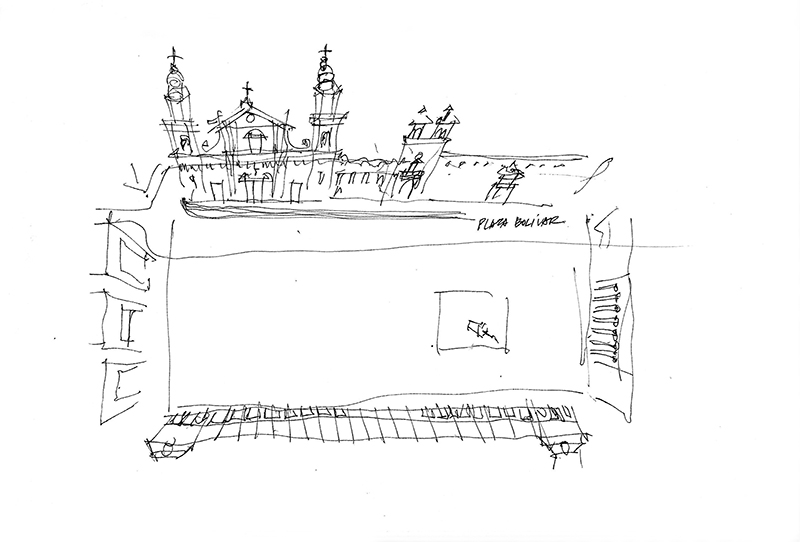
During a conference in Bogotá in 2012, we took a bus tour of the city, which made it difficult to stop for any length of time to draw. However, as we drove around the Plaza Bolívar, I managed to sketch this plan perspective of Plaza Bolívar urban space. If you look at a satellite photo of the plaza, you will see that I greatly exaggerated its length, which illustrates how one’s perception of horizontal dimensions are subject to severe distortion and are difficult to capture in a drawing.
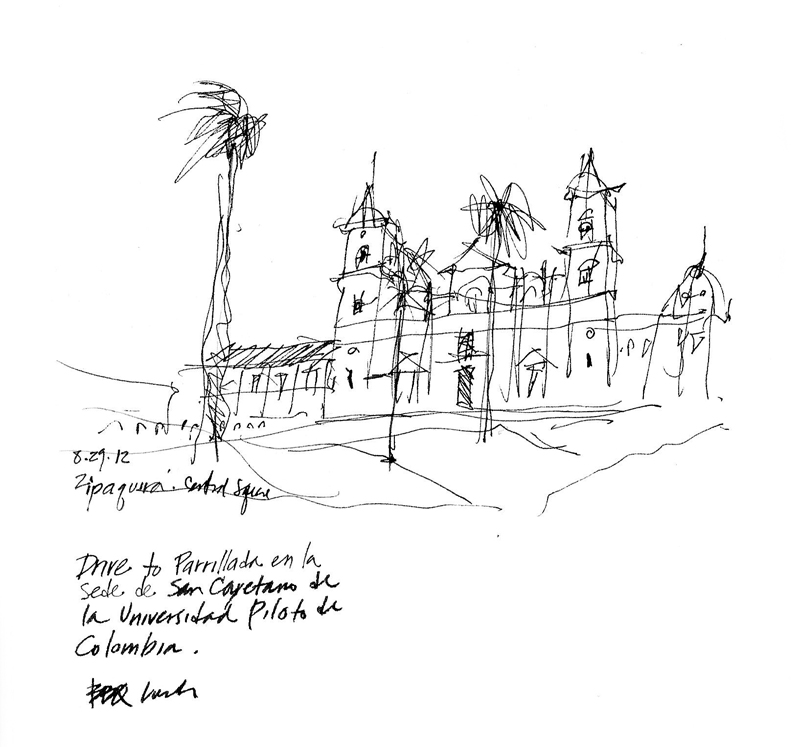
While the bus dropped us off on one corner of the square and drove around to pick us up at the opposite corner, I managed to also sketch this view of the cathedral, noting the way the slope of the square was integrated by mounding the brick pavement around the palm trees.
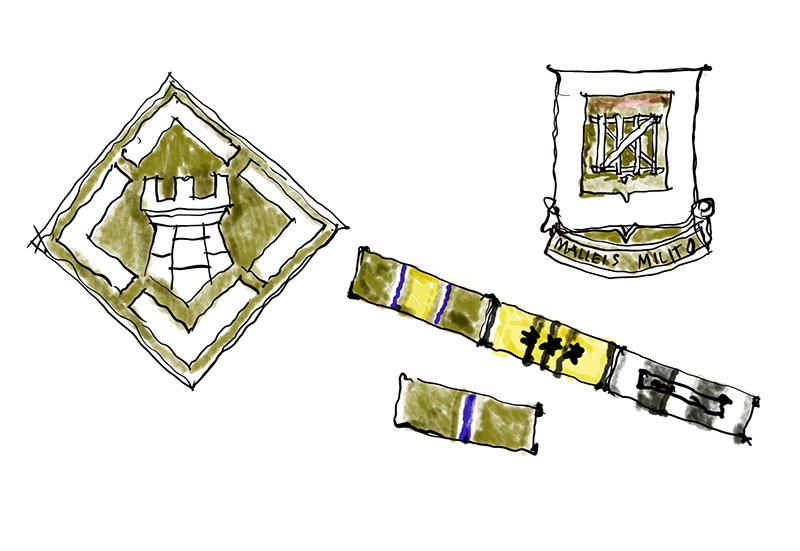
With deep respect for all who have served this country honorably.
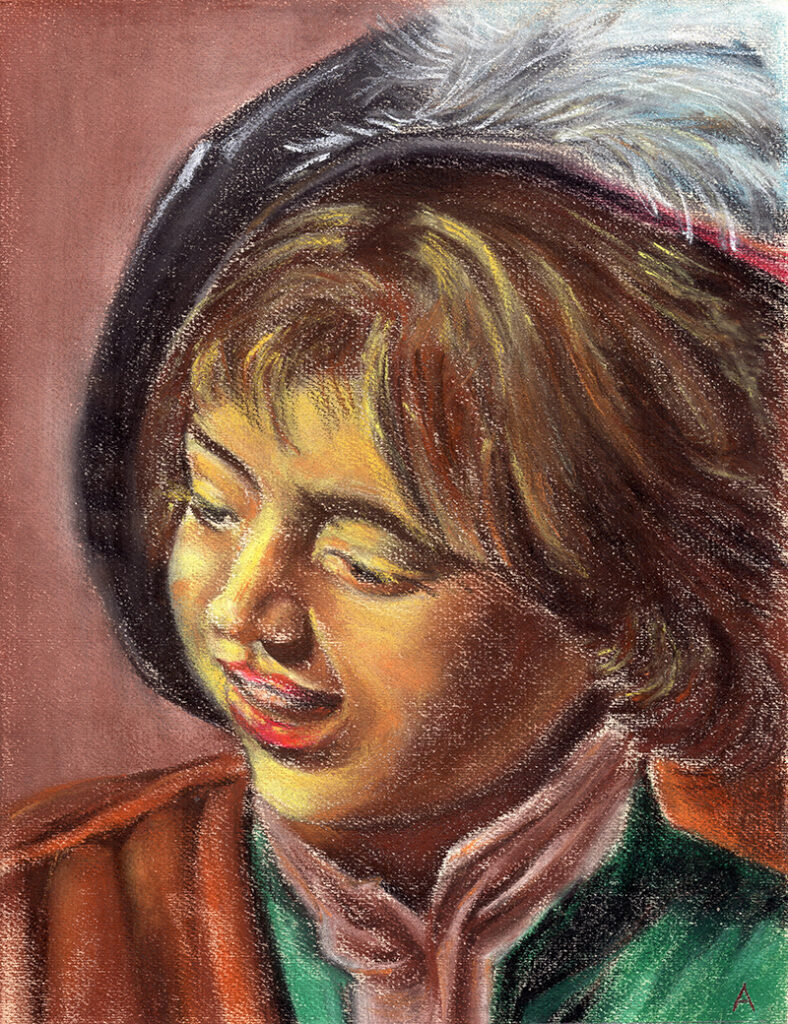
[A cropped copy of Frans Hals’ Singing Boy with Flute, 1623, Pastel, Architecture 35: Decorative Arts, University of Notre Dame, 1963]
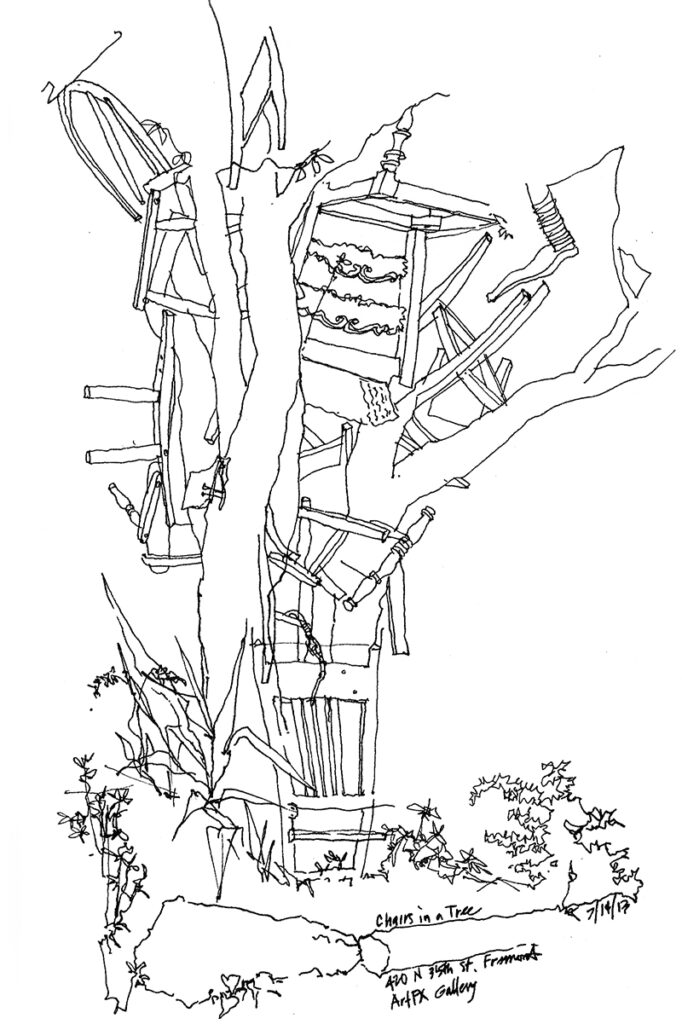
From 2013, a whimsical line drawing of a whimsical collection of chairs in a tree, located on North 35th Street, between Phinney and Evanston Avenue North. I walk past this tree daily but sadly, yesterday, I noticed that the tree had been cut down and removed. Another loss in the neighborhood
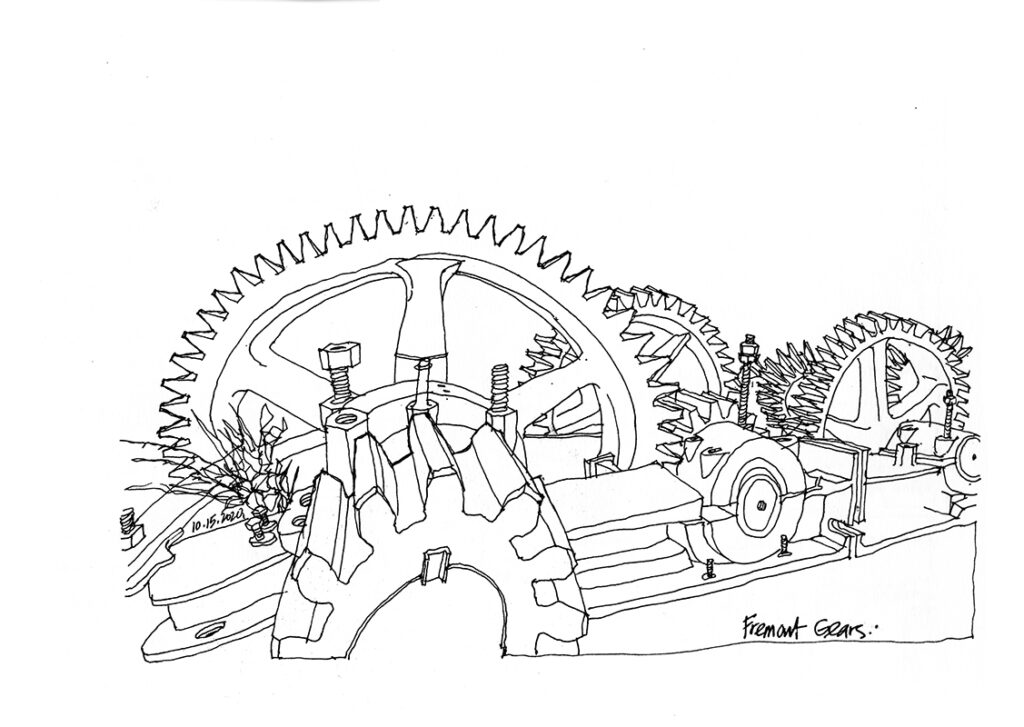
Opening in 1917, the Fremont Bridge crosses the Lake Washington Ship Canal and connects the Fremont and Queen Anne neighborhoods. In 2005, the bridge underwent a major overhaul to renovate its mechanical and electrical systems. Remnants of this renovation, such as these gears, are scattered around the Fremont neighborhood.
Unlike most of my urban sketches, this is a pure contour drawing, which involves working part to part, and requires careful observation and deliberate line work.